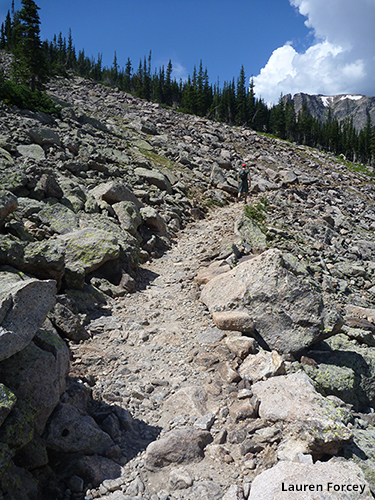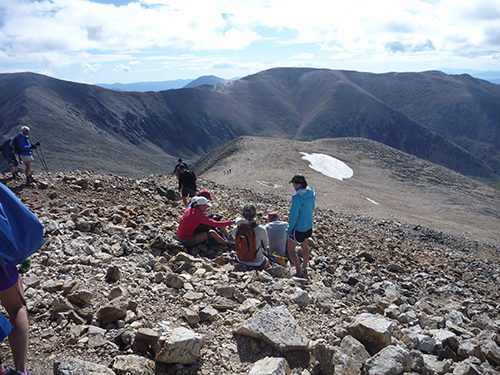Hike a Colorado 13er
Colorado 13ers, tackle these slightly shorter peaks for summer solitude.
Colorado’s summer hiking season is in full swing and many peak-baggers are setting up and checking off their 14er (peaks topping 14,000 feet above sea level) wish lists. The state’s 53 peaks over 14,000 feet attract an ever-growing number of hikers, especially on the weekends, with trailheads often hitting capacity before sun-up.
This summer, trade in the 14er craze for a summit notching in between 13,000 and 13,999 feet. You’ll be rewarded with the same mountaineering glory and scarcely come across more than a handful of hikers.
There are more than 600 Colorado 13ers to choose from. Here are three to get you going.
Carson Peak
13,657 feet
This easier-rated 13er sidles up to the Continental Divide in the San Juan Mountain Range. It’s among the highest 200 peaks in Colorado and is accessible from Carson Pass and the Colorado Trail via 4WD.
Though Carson Peak is rated among the less strenuous of our state’s 13ers, there are still scree-covered ridges, rocky cliffs and narrow traverses to maneuver. Ascend through tundra, watch for a large herd of domestic sheep and the occasional elk and follow the ridge to the summit.
Make time to stop at nearby historic Lake City and the ghost town of Carson where you’ll find preserved silver and gold mining-era buildings.
Mount Audubon 
13,223 feet
Head to Indian Peaks Wilderness near Nederland and Brainard Lake for this eight-mile out-and-back trail. Novices appreciate the easy-to-follow route and the peak’s broad ridges, flowing tundra and expansive views. On a clear day, Rocky Mountain National Park’s Longs Peak is prominent in the northerly distance.
Start from Mitchell Creek Trailhead and climb past thick evergreens and a short boulder field, hiking switchbacks to the treeline. Follow the cairns and primitive rock shelters on your journey to the top.
Pikas and late-summer wildflowers thrive along the trail and the final push climbs talus slopes, repaying hikers with gorgeous views of Lake Granby, Winter Park and beyond. Be sure to begin your hike early and summit by noon to avoid lightning.
James Peak
13,294 feet
Fairly accessible from Denver, James Peak is reached via the Fall River Road exit off I-70 and the St. Marys Glacier trailhead. Topping this 13er requires an 8.3-mile round-trip moderate (some may say strenuous) trek and stealth trail detecting in a few spots.
Named for early Rocky Mountain botanist Edwin James, the trail meanders through dense willows and bristlecone pine, crossing the St. Marys Lake snowfield and eventually following the Continental Divide Trail.
Cool creeks and blooming brilliant wildflowers make cameos, along with rock gardens and distant waterfalls. All in all, it’s 3,000 feet to the spacious, flat summit, where a swivel in any direction affords classic Colorado vistas. Wave hello to nearby 14ers Grays and Torreys, Indian Peaks and Rocky Mountain National Park and a jagged lineup of Front Range peaks.
Be Prepared
Colorado’s 13,000-foot-plus peaks are serious business. Do your research and be fully prepared for high alpine conditions before you head out and up. Here are some basic tips:
- Get to the trailhead by sunrise and off the summit by noon to avoid afternoon lightning
- Know your route, study it and bring a map and compass
- Pack food, extra water and a first-aid kit
- Bring extra layers and waterproof rain gear
- Apply sunscreen and then reapply
By Lisa Blake






